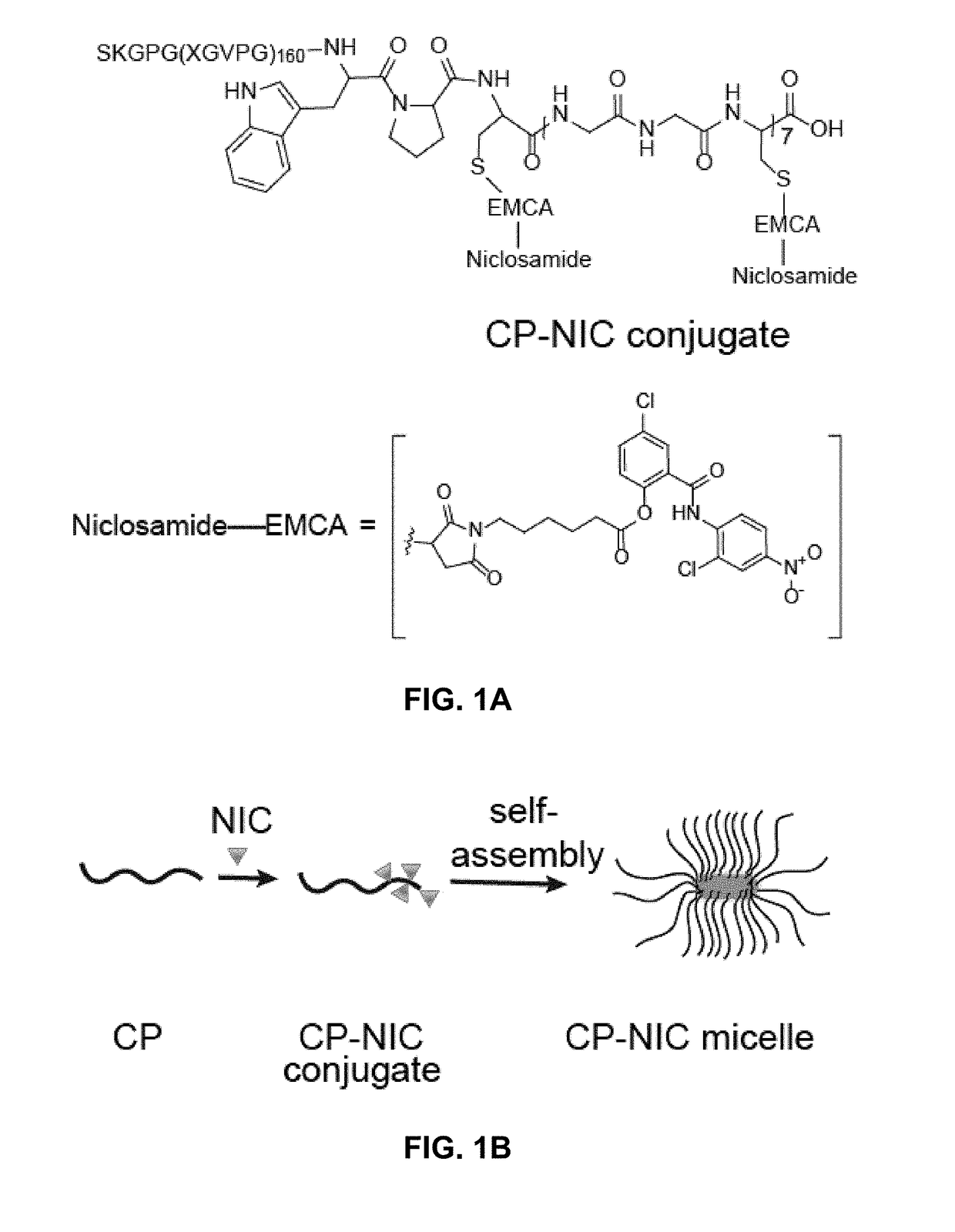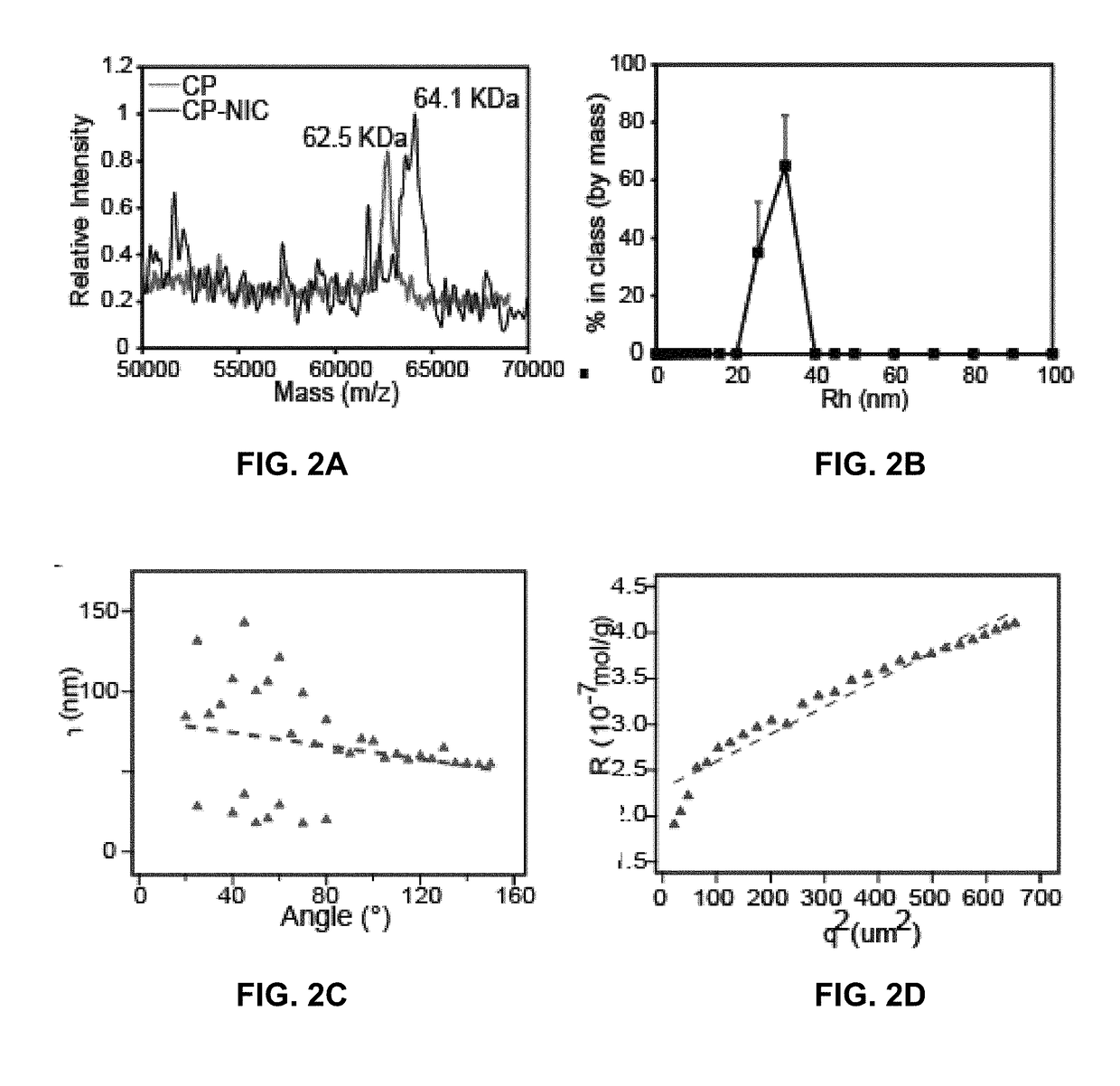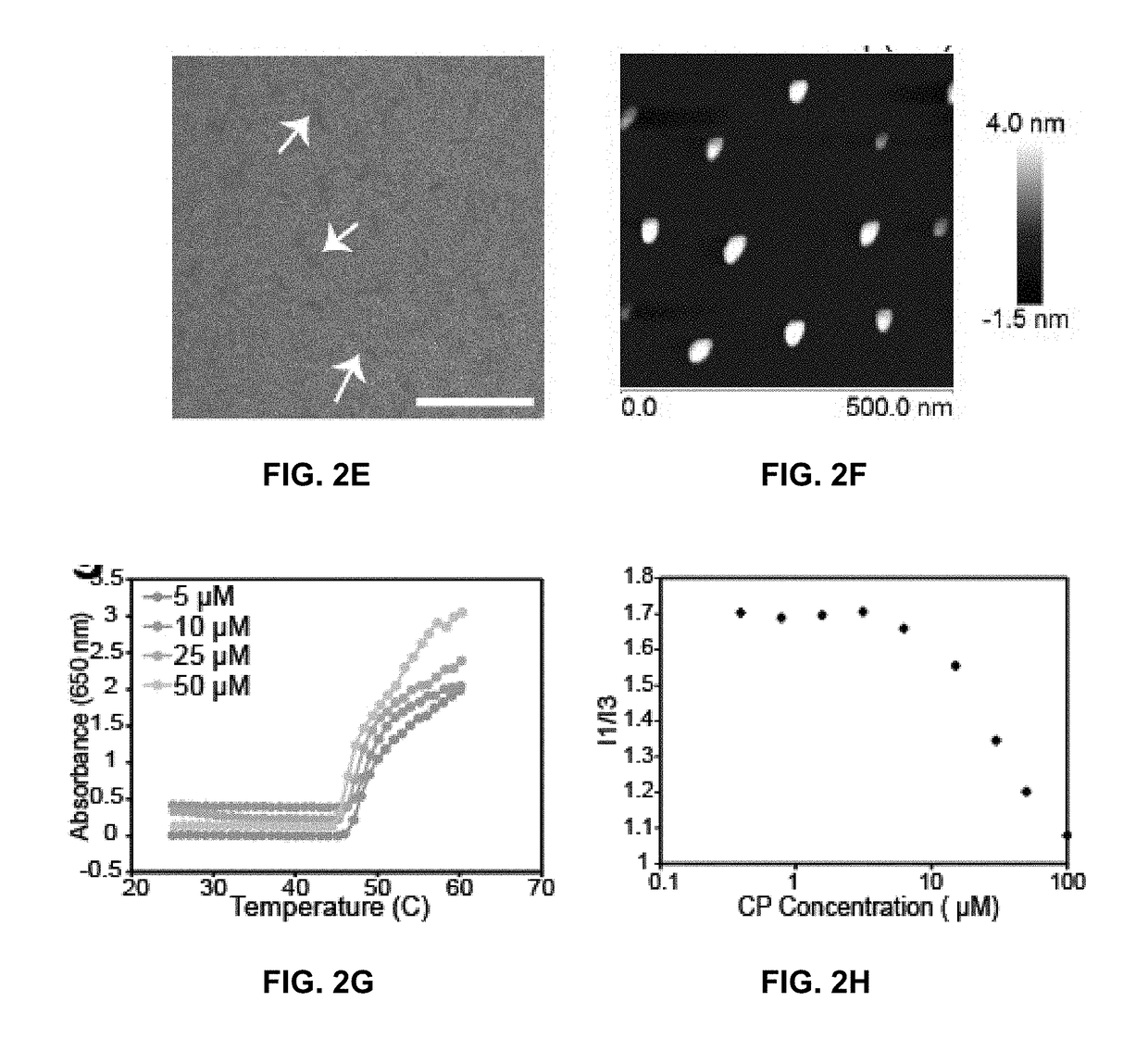Niclosamide-conjugated polypeptide nanoparticles
a technology of polypeptides and nanoparticles, which is applied in the field of conjugates of therapeutic compounds and polypeptides, can solve the problems of poor pharmacokinetic profile, low plasma exposure when dosed orally, and drug discovery targeting this pathway at the level of these proteins
- Summary
- Abstract
- Description
- Claims
- Application Information
AI Technical Summary
Benefits of technology
Problems solved by technology
Method used
Image
Examples
example 1
and Methods
[0228]Static and Dynamic Light Scattering.
[0229]Dynamic light scattering (DLS) was used to measure the particle size at 25° C. and at 10 μM concentration (n=3) in PBS after filtration through an Anotop syringe filter with 0.22 μm size pores (Whatman; Florham Park, N.J.) using a DynaPro Plate Reader (Wyatt Technology; Santa Barbara, Calif.). To obtain size histograms, regularization fits were used to determine the hydrodynamic radius (Rh) as weighted by the percent by mass. Static and dynamic light scattering (SLS / DLS) measurements were performed on an ALV / CGS-3 goniometer system (Langen, Germany). Samples for the ALV / CGS-3 goniometer system were prepared in PBS and filtered through 0.22 μm Millex-GV filters into a 10 mm disposable borosilicate glass tube (Fisher). Simultaneous SLS and DLS measurements were obtained at 22° C. for angles between 30°-150° at 5° increments, with measurements at each angle consisting of 3 runs for 15 seconds. The differential refractive index ...
example 2
of CP—NIC Conjugate
[0253]The synthesis of a representative CP—NIC conjugate was carried out by a process according to Scheme 1. A terminal maleimide was added to NIC via a substituted hexanoic acid to enable conjugation of NIC to the polypeptide. Treatment of NIC with 6-Maleimidohexanoic acid and N,N′-dicyclohexylcarbodiimide (DCC) produced the 6-Maleimidohexanoic ester derivative of NIC (I), which was covalently attached to the Cys residues of the CP.
[0254]Specifically, NIC (1.032 g, 3.16 mmol) and dry DMF (5 mL) were added to a dry vial. Next, Et3N (0.4 mL, 2.84 mmol) was added to the suspension, and the mixture was sonicated to produce a red-colored homogeneous solution. DCC (1.95 g, 9.47 mmol), dry DMF (5 mL) and 6-Maleimidohexanoic acid (1.99 g, 9.47 mmol) were added to a dry round-bottomed flask equipped with a magnetic stir bar under an Argon atmosphere. The red DMF suspension of NIC was added dropwise over 2 min to this solution at room temperature, and the vial was rinsed w...
example 3
ization of CP—NIC Conjugate
[0256]A representative chimeric polypeptide-niclosamide (CP—NIC) conjugate was prepared to explore the advantage of nano-formulation technology to deliver NIC as a targeted therapeutic agent with improved pharmacodynamic properties (FIGS. 1A-1B). Specifically, a representative CP prepared here included an elastin-like polypeptide (ELP), a disordered and highly water soluble recombinant peptide polymer, and a Cys-(Gly-Gly-Cys)7 peptide segment at the C-terminus (FIG. 1A). The CP was conjugated to NIC through the covalent bonding between the C-terminus Cys residues of the CP and the maleimide group of a 6-maleimidohexanoic ester derivative of NIC (FIG. 1A). It was observed that the attachment of NIC as a hydrophobic moiety to the hydrophilic polypeptide chain triggers self-assembly of the CP—NIC conjugate into cylindrical nanoparticles with a drug-rich core (formed by the aggregation of the hydrophobic NIC moieties) and surrounding hydrophilic polypeptide ch...
PUM
| Property | Measurement | Unit |
|---|---|---|
| Composition | aaaaa | aaaaa |
| Structure | aaaaa | aaaaa |
| Solubility (mass) | aaaaa | aaaaa |
Abstract
Description
Claims
Application Information
 Login to View More
Login to View More - R&D
- Intellectual Property
- Life Sciences
- Materials
- Tech Scout
- Unparalleled Data Quality
- Higher Quality Content
- 60% Fewer Hallucinations
Browse by: Latest US Patents, China's latest patents, Technical Efficacy Thesaurus, Application Domain, Technology Topic, Popular Technical Reports.
© 2025 PatSnap. All rights reserved.Legal|Privacy policy|Modern Slavery Act Transparency Statement|Sitemap|About US| Contact US: help@patsnap.com



